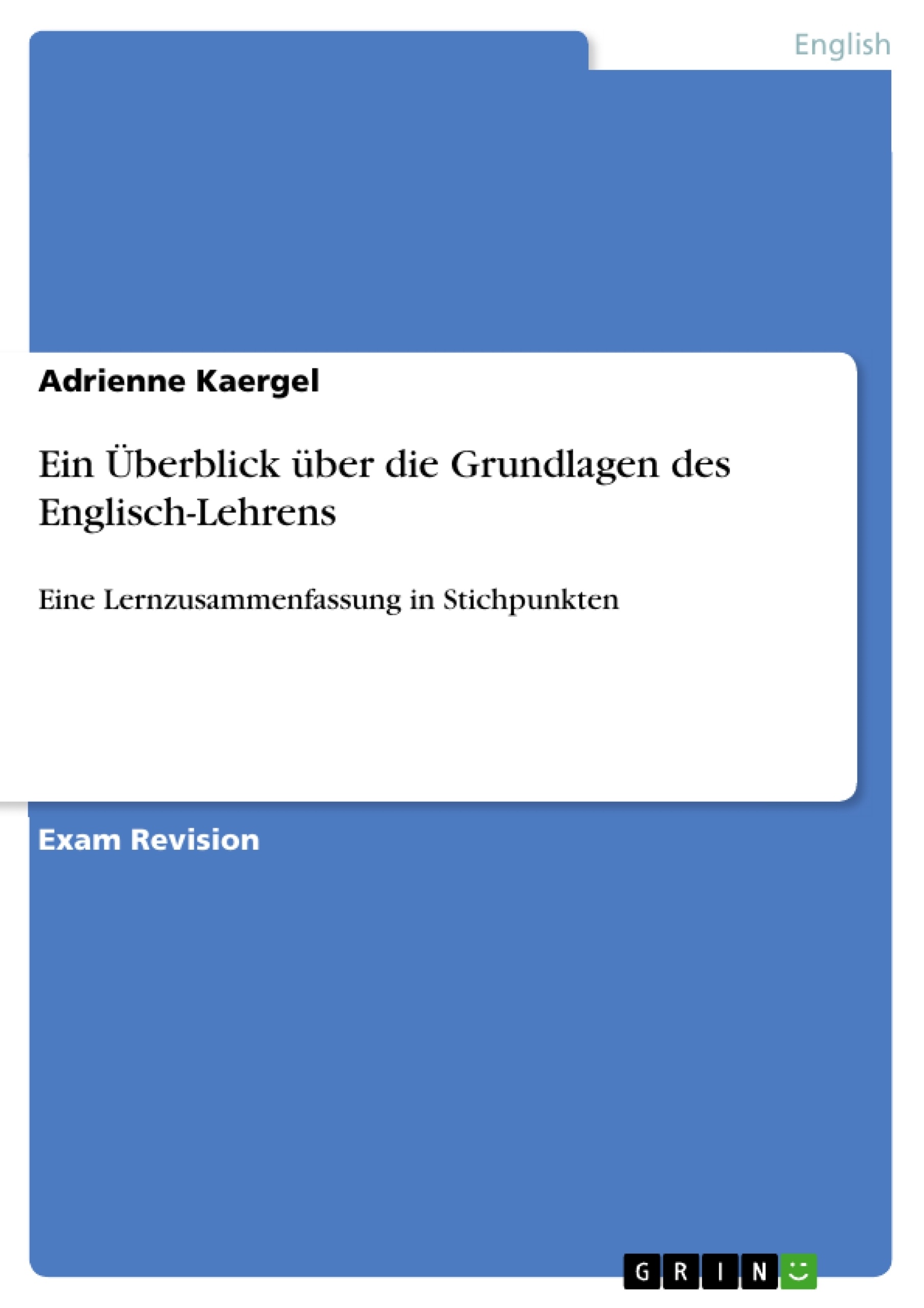This is a short summary about teaching English in general with the main goal of language learning and the historical development of teaching approaches.
The summary focuses on TSLL: Why is TSLL now so popular?, Characteristics of Tasks, The difference between TBLL and TSLL, The difference between exercise, activity and task, Different types of tasks, How to analyze Tasks, How to design tasks, How to work with tasks (Task-cycle of Willis), Project work, Strengths and Limitations of TSLL, TSLL research, What makes a good task?, The role of the teacher, How may TSLL teaching competences be developed?
Inhaltsverzeichnis (Table of Contents)
- Three particularly relevant aspects in teaching
- Promoting intercultural communicative competence
- Developing learner- and learning-centered teaching in classrooms to define ways in which the social context of school affects language teaching and learning
- Supporting task-based learning
- Interrelated disciplines of language teaching and learning
- Linguistics
- Languages as systems of human communication
- Applied Linguistics
- Heterogeneous field drawing on and interfacing with a range of other academic disciplines (Nunan 2001)
- Second Language Acquisition (SLA)
- Discipline which deals with the question how second or foreign languages are learned.
- Philosophy of Education
- General principles of human education of which learning a foreign language is a part
- Learning Theory and Psychology
- Describes how and why people learn
- Literary Studies
- Discusses the nature of literary texts as one form of communication
- Cultural Studies
- Analysis different cultural phenomena and the way they represent cultural meaning
- What is the main goal of language learning?
- According to the Common European Framework (CEF) intercultural communicative competence (ICC) is the main goal of foreign language learning.
- Historical development of teaching approaches
- The classical period (late 19th Century)
- The reform period (early 20th Century)
- The Scientific Period (because of language labs, radio etc.) (Around the 50s)
- The Communicative Period (Since the 70s)
- Focus on: Task Supported Language Learning
- Definition
- Why is TSLL now so popular?
- Characteristics of Tasks
- Let's use an example to highlight the characteristics of TBLL/TSLL: The Airport Project
- The difference between TBLL and TSLL
Zielsetzung und Themenschwerpunkte (Objectives and Key Themes)
This text examines the core principles and practices of language teaching and learning. The aim is to provide a comprehensive overview of the various disciplines that inform this field and to highlight the key issues in the development of learner-centered approaches.
- Intercultural Communicative Competence (ICC)
- Learner-Centered Teaching Approaches
- Task-Based Language Learning (TBLL) and Task-Supported Language Learning (TSLL)
- The Role of Context and Social Interaction in Language Acquisition
- The Evolution of Language Teaching Methodologies
Zusammenfassung der Kapitel (Chapter Summaries)
- The text begins by introducing three key aspects of effective language teaching: promoting intercultural communicative competence, developing learner-centered approaches, and supporting task-based learning. It then delves into the interrelated disciplines that contribute to our understanding of language teaching and learning, including linguistics, applied linguistics, second language acquisition, philosophy of education, learning theory and psychology, literary studies, and cultural studies.
- The text then focuses on the main goal of language learning, highlighting the importance of intercultural communicative competence (ICC) as defined by the Common European Framework (CEF). It provides a brief overview of the CEF's purpose and structure.
- The historical development of language teaching approaches is explored, with a focus on the key concerns, associated methods, and critiques of each period. These periods include the classical period, the reform period, the scientific period, and the communicative period.
- The text then delves into the concept of task-supported language learning (TSLL), providing a definition and outlining the rationale behind its growing popularity. It explores the characteristics of tasks and differentiates between task-based language teaching (TBLL) and TSLL, emphasizing the importance of balancing form and meaning in language learning.
Schlüsselwörter (Keywords)
The text emphasizes key concepts such as intercultural communicative competence (ICC), learner-centered teaching, task-based language learning (TBLL), task-supported language learning (TSLL), communicative language teaching, and the Common European Framework (CEF). It also explores the role of various disciplines, including linguistics, applied linguistics, second language acquisition, and learning theory and psychology, in informing language teaching practices.
- Quote paper
- Adrienne Kaergel (Author), 2017, Ein Überblick über die Grundlagen des Englisch-Lehrens, Munich, GRIN Verlag, https://www.grin.com/document/441983



